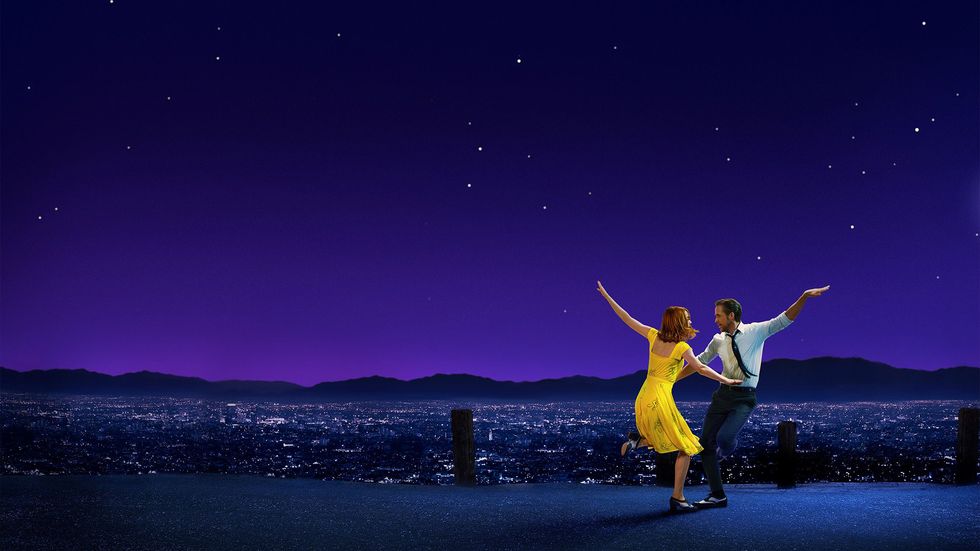The stars are beautiful. I look up at them and know that the twinkling, great big balls of gas millions of lightyears away have a mesmerizing effect on me. But then when somebody starts talking of constellations and connecting imaginary dots in the space between, I get so lost and confused that suddenly I lose sight of the beauty in the stars themselves.
And La La Land has that same effect on me. It’s a bunch of beautiful scenes (or stars) that could actually stand on their own individual merit, but when they’re strung together and ask the audience to view them as a complete constellation, it doesn’t seem to form anything coherent.
Winner of six Oscars at the most recent Academy Awards ceremony—although best remembered for the award they did not win —La La Land (2016) comes from the mind of Damien Chazelle, who has burst onto the Hollywood scene with Guy and Madeline on a Park Bench (2009) and Whiplash (2016). The film features two artists struggling to find their way in the competitive Los Angeles, and instead find each other. Mia (Emma Stone: The Help) is an aspiring actress trapped in the endless cycle of humiliating auditions and bored casting scouts. Sebastian (Ryan Gosling: Drive) is a jazz enthusiast whose piano skills are sorely underappreciated. Together, though, Mia and Sebastian realize that dreams never die—even if you’ve given up hope.
As I’m writing this I have my own struggle with my belief to not discuss important spoilers in my reviews, but I also realize that it’s impossible to give an accurate opinion without mentioning certain spoilers in La La Land to some capacity. What I will say is that by the film’s end, I felt that instead of seeing a musical, I had witnessed a magic show. Metaphorically speaking, La La Land has dazzling showmanship, with a spirited choreography and beautiful instrumental score, that lulls the audience into missing the sleight of hand. It’s a trick, because the surrealistic and artistic visualization (Mia and Sebastian dancing in the air during one scene, for example) make me invested in their relationship without actually knowing anything about them. The character summarizations I have in the previous paragraph is surprisingly everything the movie will give you about Mia or Sebastian; it’s all one variation on the same theme.
And you can take that as you will, for better or for worse. For me, I felt cheated at the end because I didn’t feel like I had enough conception of the emotional relationship Chazelle wanted me to get from Mia and Sebastian.
That being said, La La Land has some of the best technical elements about a film I have ever seen. (All the more disappointing that I couldn’t bring myself to fully accept the characters or the plot.) The cinematography is something that I know will be taught in film schools in the near future, because it relies on panoramic, one-shot scenes that allow the audience to appreciate the choreography and acting of Stone and Gosling. My favorite scene is where Mia and Sebastian find themselves on a hill overlooking Los Angeles, and under the light of stars and streetlamps, they perform a beautiful, energetic tap dance that’s an homage to the Golden Age of musicals back from the 40s through the 60s.
La La Land is a film that is technically perfect, but it’s also a divisive movie—people will either accept the relationship or they won’t. If you’re in the minority like me (La La Land did win six Oscars and has a 93% approval rating on Rotten Tomatoes), then the entire story implodes on itself like a supernova.
Rating: C+ | 2½ stars


















